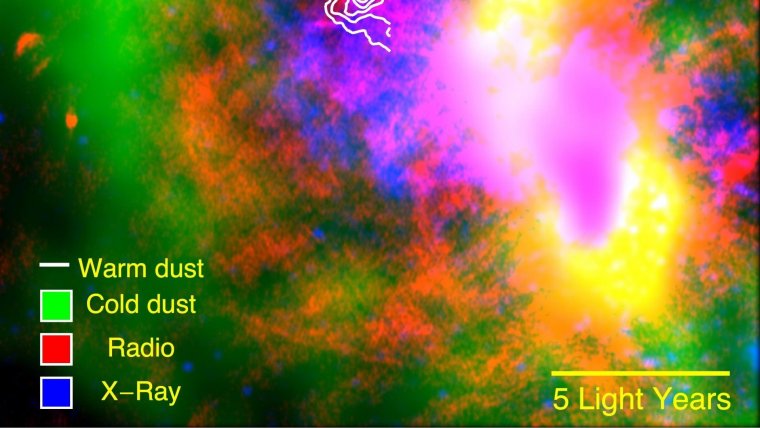| News / Space News |
Missing Link Between Supernovae and Planet Formation
NASA | MARCH 22, 2015
Using NASA's Stratospheric Observatory for Infrared Astronomy (SOFIA), an international scientific team discovered that supernovae are capable of producing a substantial amount of the material from which planets like Earth can form.

SOFIA data reveal warm dust (white) surviving inside a supernova remnant. The SNR Sgr A East cloud is traced in X-rays (blue). Radio emission (red) shows expanding shock waves colliding with surrounding interstellar clouds (green). ![]()
The research team used SOFIA's airborne telescope and the Faint Object InfraRed Camera for the SOFIA Telescope, to take detailed infrared images of an interstellar dust cloud known as Supernova Remnant Sagittarius A East.
The team used SOFIA data to estimate the total mass of dust in the cloud from the intensity of its emission.
Astronomers already had evidence that a supernova’s outward-moving shock wave can produce significant amounts of dust. Until now, a key question was whether the new soot- and sand-like dust particles would survive the subsequent inward “rebound” shock wave generated when the first, outward-moving shock wave collides with surrounding interstellar gas and dust.
The dust survived the later onslaught of shock waves from the supernova explosion, and is now flowing into the interstellar medium where it can become part of the 'seed material' for new stars and planets.
YOU MAY ALSO LIKE




